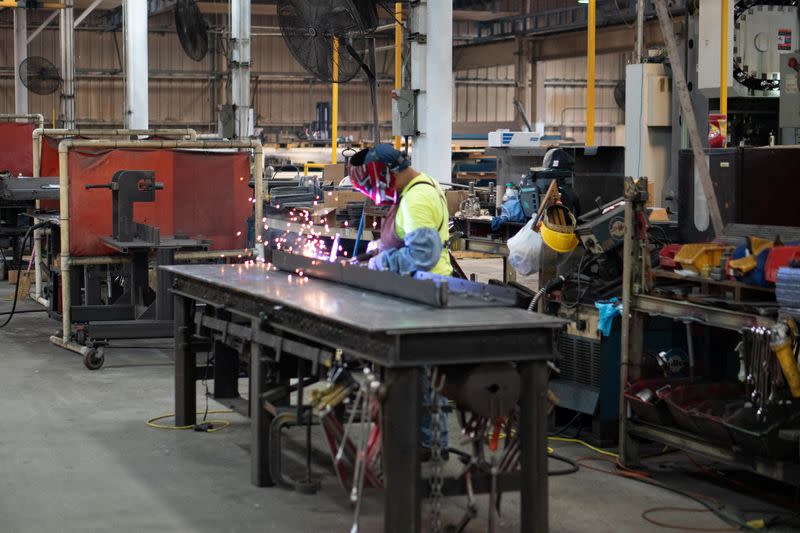US manufacturing output barely grows in May

WASHINGTON (Reuters) - Production at U.S. factories almost stalled in May as manufacturing struggled under the weight of higher interest rates, data showed on Thursday.
Manufacturing output edged up 0.1% last month, the Federal Reserve said. Data for April was revised slightly lower show production at factories surging 0.9% instead of 1.0% as previously reported. Last month's gain in factory production was in line with economists' expectations.
Output fell 0.3% on a year-on-year basis in May. Motor vehicle production rose 0.2% last month after accelerating 9.8% in April. Durable manufacturing output increased 0.3%, while production of nondurable goods slipped 0.1%.
In addition to being hobbled by higher borrowing costs, manufacturing, which accounts for 11.3% of the U.S. economy, has been dealt a blow by a shift in spending from goods to services.
Banks have also tightened lending standards, which could make credit inaccessible to some small- and medium-sized businesses as well as consumers.
Businesses carefully managing inventories are also adding to the pressure on manufacturing. Private inventory investment rose at its slowest pace in 1-1/2 years in the first quarter.
The Institute for Supply Management(ISM) this month described customer inventories as being at levels "likely not conducive to future output growth."
The ISM's measure of national factory activity has remained below the 50 threshold, which indicates contraction in manufacturing, for seven straight months. That is the longest such stretch since the Great Recession.
In May, mining output fell 0.4%, driven primarily by decreases in oil and gas well drilling, after rising 0.3% in April. Utilities production dropped 1.8% for a second straight month as electric utilities fell, while natural gas utilities was unchanged.
With manufacturing barely rising, mining and utilities output falling, overall industrial production dropped 0.2% in May. Industrial output increased 0.5% in April.
Capacity utilization for the industrial sector, a measure of how fully firms are using their resources, fell to 79.6% from
79.8% in April. It is 0.1 percentage point below its 1972–2022 average. Capacity use for the manufacturing sector was unchanged at 78.4% and is 0.2 percentage point above its long-run average.
(Reporting by Lucia Mutikani; Editing by Chizu Nomiyama)

 Yahoo Finance
Yahoo Finance 